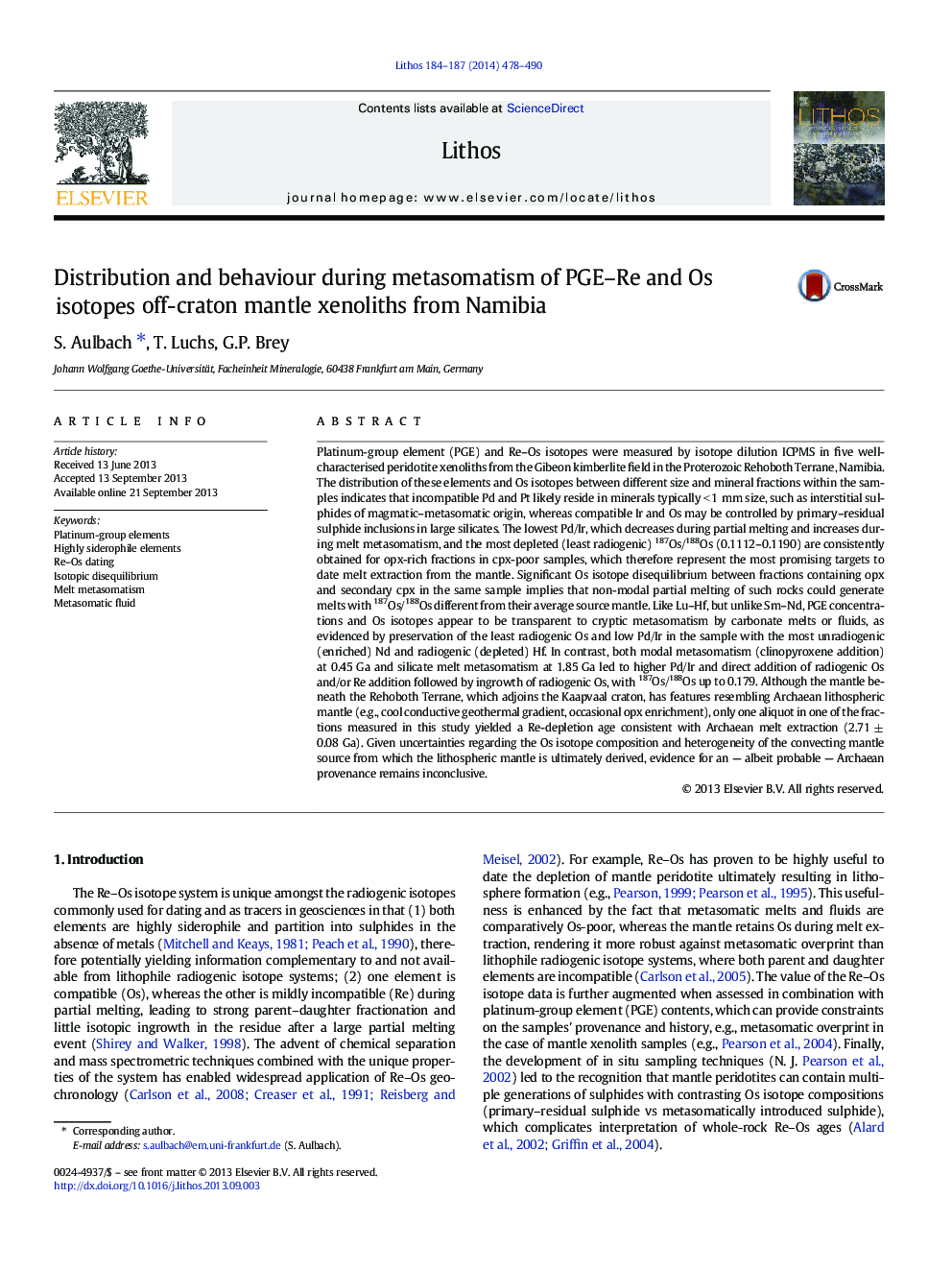| Article ID | Journal | Published Year | Pages | File Type |
|---|---|---|---|---|
| 4716144 | Lithos | 2014 | 13 Pages |
•PGE–Re–Os isotopes in different size and mineral fractions of peridotite xenoliths•Pd–Pt sited in minerals < 1 mm size = interstitial magmatic–metasomatic sulphides•Ir–Os controlled by primary–residual sulphide inclusions in large silicates•Lowest 187Os/188Os consistently in opx-rich fractions of cpx-poor samples•Significant 187Os/188Os disequilibrium between opx and fractions with secondary cpx
Platinum-group element (PGE) and Re–Os isotopes were measured by isotope dilution ICPMS in five well-characterised peridotite xenoliths from the Gibeon kimberlite field in the Proterozoic Rehoboth Terrane, Namibia. The distribution of these elements and Os isotopes between different size and mineral fractions within the samples indicates that incompatible Pd and Pt likely reside in minerals typically < 1 mm size, such as interstitial sulphides of magmatic–metasomatic origin, whereas compatible Ir and Os may be controlled by primary–residual sulphide inclusions in large silicates. The lowest Pd/Ir, which decreases during partial melting and increases during melt metasomatism, and the most depleted (least radiogenic) 187Os/188Os (0.1112–0.1190) are consistently obtained for opx-rich fractions in cpx-poor samples, which therefore represent the most promising targets to date melt extraction from the mantle. Significant Os isotope disequilibrium between fractions containing opx and secondary cpx in the same sample implies that non-modal partial melting of such rocks could generate melts with 187Os/188Os different from their average source mantle. Like Lu–Hf, but unlike Sm–Nd, PGE concentrations and Os isotopes appear to be transparent to cryptic metasomatism by carbonate melts or fluids, as evidenced by preservation of the least radiogenic Os and low Pd/Ir in the sample with the most unradiogenic (enriched) Nd and radiogenic (depleted) Hf. In contrast, both modal metasomatism (clinopyroxene addition) at 0.45 Ga and silicate melt metasomatism at 1.85 Ga led to higher Pd/Ir and direct addition of radiogenic Os and/or Re addition followed by ingrowth of radiogenic Os, with 187Os/188Os up to 0.179. Although the mantle beneath the Rehoboth Terrane, which adjoins the Kaapvaal craton, has features resembling Archaean lithospheric mantle (e.g., cool conductive geothermal gradient, occasional opx enrichment), only one aliquot in one of the fractions measured in this study yielded a Re-depletion age consistent with Archaean melt extraction (2.71 ± 0.08 Ga). Given uncertainties regarding the Os isotope composition and heterogeneity of the convecting mantle source from which the lithospheric mantle is ultimately derived, evidence for an — albeit probable — Archaean provenance remains inconclusive.
